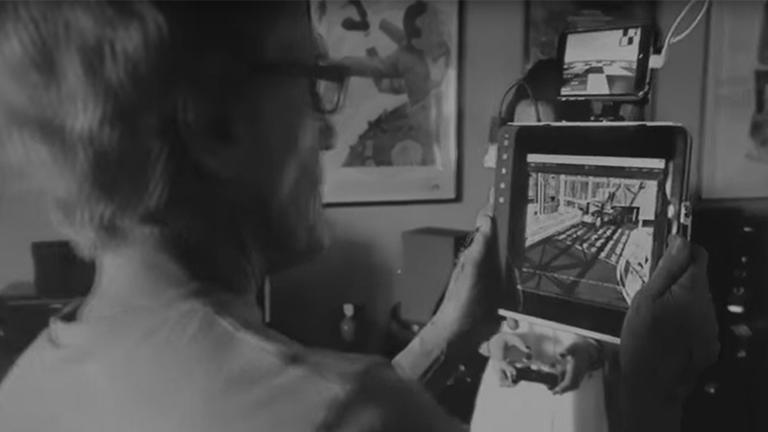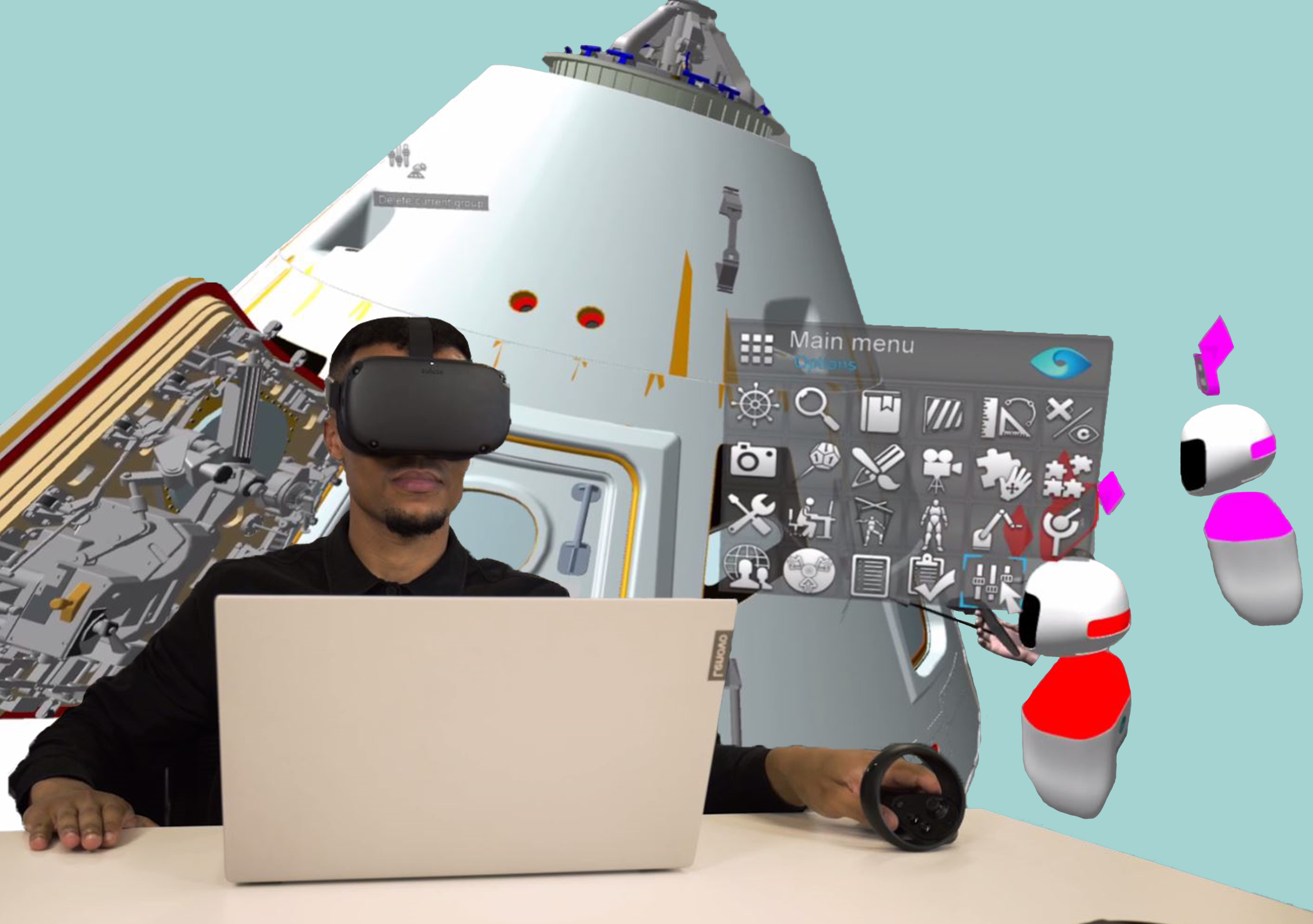Rendering
What are Some of the Biggest Challenges in Real-time Rendering?
Real-time rendering has been an integral part of the gaming and computer graphics industry. It is the process of generating instant visual feedback of a 3D scene, as it appears in the real world. Real-time rendering is extensively used in video games, movies, and virtual reality applications. It enables users to interact with the rendered environment, manipulate objects, and perceive changes in real-time. However, real-time rendering comes with its own set of challenges. In this blog post, we will explore some of the biggest challenges faced by developers in real-time rendering and how they overcome them to create immersive experiences for users.

- 1. Introduction to the challenges of real-time rendering
- 2. Importance of cinematic image quality and its challenges
- 3. Illumination challenges in real-time rendering
- 4. The problem of dense geometry in rendering algorithms
- 5. Tips and guidance for successful integration of real-time rendering
- 6. Time, cost, and quality balancing in architectural design with real-time rendering
- 7. Open problems in real-time graphics: shadows, aliasing, reflections, global illumination, transparencies
- 8. Better acceleration structure as an open problem for ray-tracing in real-time rendering
- 9. Level-of-detail problem in modern real-time graphics and their complexity
- 10. Distinguishing pixels in temporal supersampling for rendering as a core problem
1. Introduction to the challenges of real-time rendering
In my experience, real-time rendering presents a unique set of challenges that require careful consideration and planning. As we've discussed in previous sections, achieving cinematic image quality is a top priority, along with tackling illumination challenges and dealing with dense geometry in rendering algorithms. However, it's also important to remember the time, cost, and quality balancing act required for the successful integration of real-time rendering in architectural design. Additionally, open problems in real-time graphics such as shadows, aliasing, reflections, global illumination, and transparencies continue to pose challenges for the industry. To make matters more complex, better acceleration structures for ray tracing and the level-of-detail problem in modern real-time graphics also demand attention. In short, while real-time rendering is an amazing tool for visualization and prototyping, it requires an ongoing commitment to innovation and problem-solving.

2. Importance of cinematic image quality and its challenges
As I've mentioned before, cinematic image quality is one of the biggest challenges in real-time rendering. Achieving a high level of visual fidelity that meets the standards of film and television requires incredible attention to detail and advanced techniques. This includes things like realistic textures, dynamic lighting, accurate shadows, and complex effects such as motion blur and depth of field. With real-time rendering, these challenges are compounded by the need to maintain a high frame rate and real-time interactivity. Balancing these technical considerations with artistic vision is no easy feat, but with the right tools and approach, it is possible to achieve stunning cinematic image quality in real-time graphics.

3. Illumination challenges in real-time rendering
As I mentioned earlier, achieving cinematic image quality in real-time rendering is a major challenge. But even after that, we need to tackle the issue of illumination. Real-time rendering of atmospheric light scattering is one of the most difficult lighting effects computer graphics artists face. To overcome this challenge, we need to use binning approaches to spectral rendering. However, this poses additional difficulties such as limited time and the many-lights problem. The key is to strike a balance between time, cost, and quality, especially when it comes to architectural design. Moreover, open problems in real-time graphics like shadows, aliasing, reflections, global illumination, and transparencies add to the complexity of illumination. To tackle these problems, we need a better acceleration structure for ray-tracing and to address the level-of-detail problem in modern real-time graphics. Additionally, distinguishing pixels in temporal supersampling is another crucial problem to solve for successful illumination in real-time rendering.

4. The problem of dense geometry in rendering algorithms
As I mentioned earlier, one of the biggest challenges in real-time rendering is the problem of dense geometry in rendering algorithms. When we have lots of overlapping and small triangles, rendering becomes difficult because we cannot accurately acquire the complete geometry of intricately shaped objects that are soft or cluttered. State-of-the-art methods are emerging, such as neural signed distance functions for representing 3D shapes, but they come with their complications. An efficient algorithm for 3D point cloud upsampling is also being used, which utilizes discrete differential geometry and optimization techniques. However, the challenge remains to deliver images at interactive frame rates, even for very complex objects. It's essential for rendering algorithms to find a balance between accuracy and efficiency to achieve realistic results within a reasonable timeframe. In the next section, I will discuss tips and guidance for successfully integrating real-time rendering in architectural design processes.

5. Tips and guidance for successful integration of real-time rendering
As we've seen in the previous sections, real-time rendering comes with a lot of challenges. However, with the right guidance and tools, successful integration is achievable. One of the key tips is to focus on optimizing for real-time engines like UE4 or UE5. This includes utilizing GPU rendering for faster performance and accessing and installing the necessary real-time shaders. Another important factor is balancing time, cost, and quality in architectural design, which can be achieved through the use of real-time visualization tools. Additionally, it's crucial to have a solid understanding of the three stages of the real-time rendering pipeline, including the application stage, the geometry stage, and the rasterizing stage. With all of these elements in place, real-time rendering can become a powerful tool for achieving cinematic image quality and efficient design processes.

6. Time, cost, and quality balancing in architectural design with real-time rendering
As we've discussed, real-time rendering has brought many new capabilities to architectural design, but it also presents challenges that must be carefully balanced. Given the time-consuming nature of traditional rendering methods, real-time rendering can offer enormous benefits in terms of speeding up the overall design process. However, it's important to keep in mind that time savings must be weighed against quality concerns. Striking the right balance between speed and quality requires careful planning and monitoring throughout the project lifecycle. Additionally, cost concerns must be carefully considered when choosing a real-time rendering solution. While real-time rendering offers significant cost savings over traditional rendering methods, it's essential to weigh the costs of software, hardware, and labor against the project's overall budget. Ultimately, success in real-time rendering requires a combination of technical expertise, strategic planning, and continuous monitoring to ensure that the project's goals are met on time, on budget, and with the desired level of visual quality.
7. Open problems in real-time graphics: shadows, aliasing, reflections, global illumination, transparencies
As discussed earlier, real-time rendering presents a multitude of challenges that designers must tackle. One such challenge arises in the form of open problems in real-time graphics, including shadows, aliasing, reflections, global illumination, and transparencies. These issues often manifest as visual inaccuracies, such as jagged edges or unrealistic lighting, which can detract from the overall quality of the rendered image. As a result, designers must continuously work towards developing more efficient algorithms and improving hardware capabilities to address these problems. Despite all the advancements in the field, there are still obstacles to overcome. However, as professionals in the computer graphics industry, we must approach these open problems with innovation and creativity, finding novel ways to produce high-quality, real-time rendered images.
8. Better acceleration structure as an open problem for ray-tracing in real-time rendering
As previously mentioned, one of the biggest challenges in real-time rendering is achieving cinematic image quality. To achieve this level of quality, ray tracing has become a popular technique, but it comes with its own set of challenges. One of these challenges is the need for a better acceleration structure. The current de facto standard for ray-tracing acceleration structures is the BVH, but it has its limitations. One problem is the cost of constructing and traversing the structure, which can be a bottleneck in real-time rendering. Additionally, the BVH only places each primitive in one leaf, which can limit its accuracy. As a result, researchers are working on developing new acceleration structures that can handle the demands of real-time ray tracing. As an open problem for real-time graphics, the need for a better acceleration structure underscores the importance of continued innovation and development in this field.
9. Level-of-detail problem in modern real-time graphics and their complexity
As we've discussed in previous sections, rendering highly complex scenes in real time can be a significant challenge. One of the core issues that feed into this challenge is the problem of level-of-detail (LOD) in modern real-time graphics. Essentially, LOD refers to the idea that components of a scene can be represented with varying levels of complexity depending on their distance from the viewer. The further away an object is, the less detail is required to accurately represent it, which can save significant computational resources. However, properly implementing LOD is a highly complex problem, requiring careful optimization and balancing to avoid graphical artifacts or issues like “popping” objects appearing out of nowhere as the LOD changes. Finding the right balance between detail and performance is critical in modern real-time graphics, and requires careful consideration and testing to get right.
10. Distinguishing pixels in temporal supersampling for rendering as a core problem
One of the core challenges in real-time rendering is distinguishing pixels in temporal supersampling for rendering. As mentioned earlier, the direct consequence of real-time applications is that image resolution and temporal resolution often suffer due to performance constraints. To mitigate this, precise temporal dynamics are available for point-sampled image pixels. Our method combines temporal supersampling with an accurate estimate of temporal sub-pixel motion, resulting in a high-quality, temporally stable output image. However, this remains a significant technical problem that must be addressed to achieve better cinematic image quality and illumination in real-time graphics, especially in scenes with dense geometry. By solving this core problem, we can significantly enhance the overall quality of real-time rendered content.